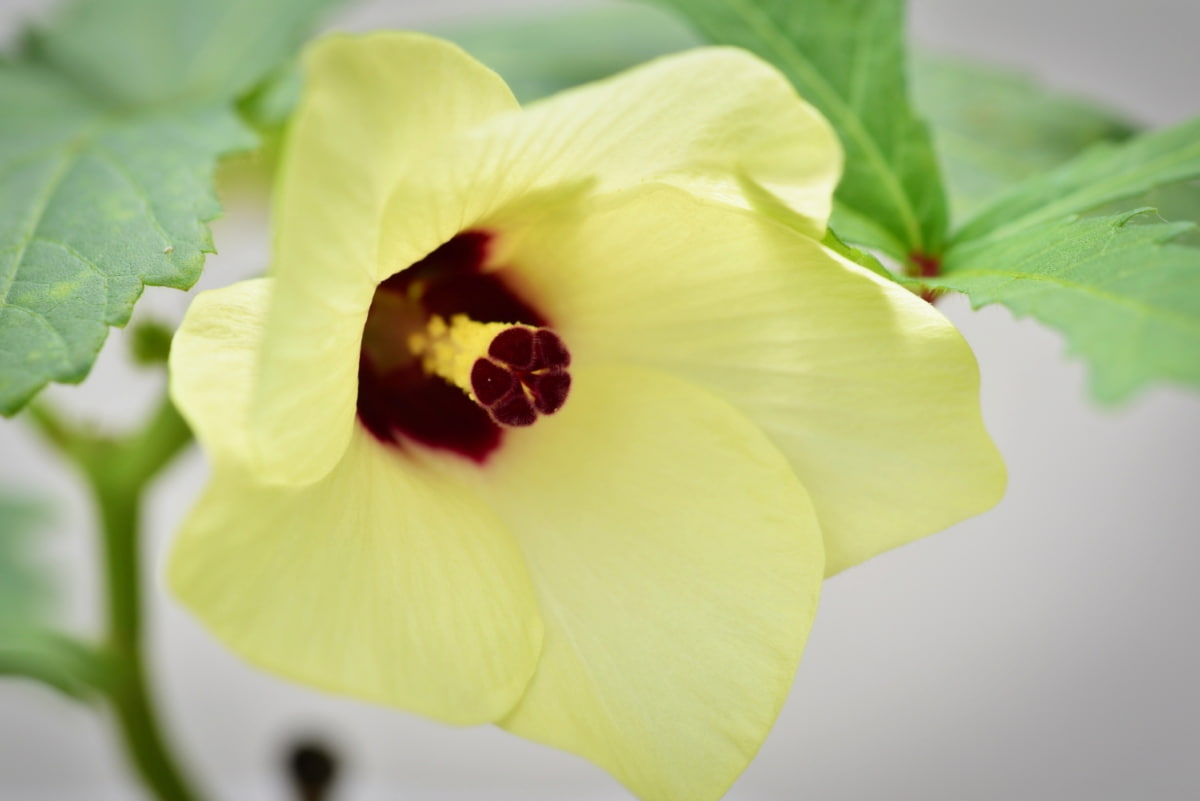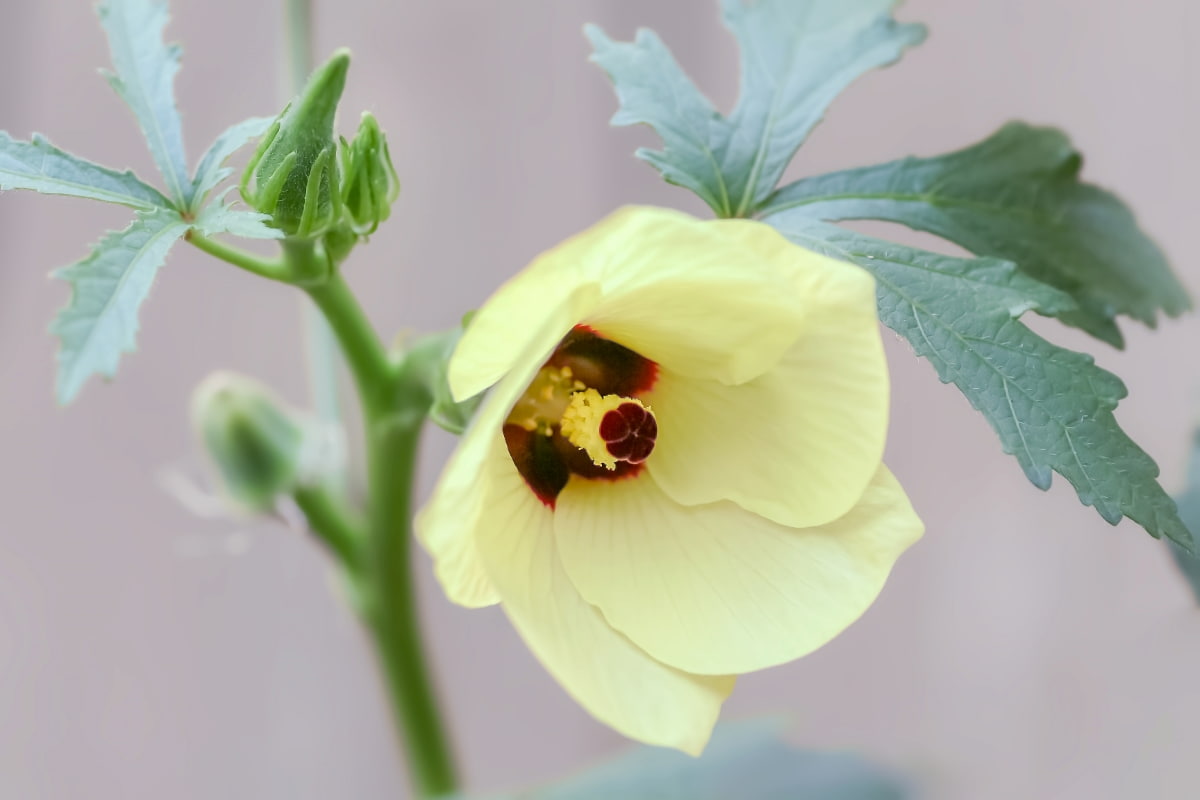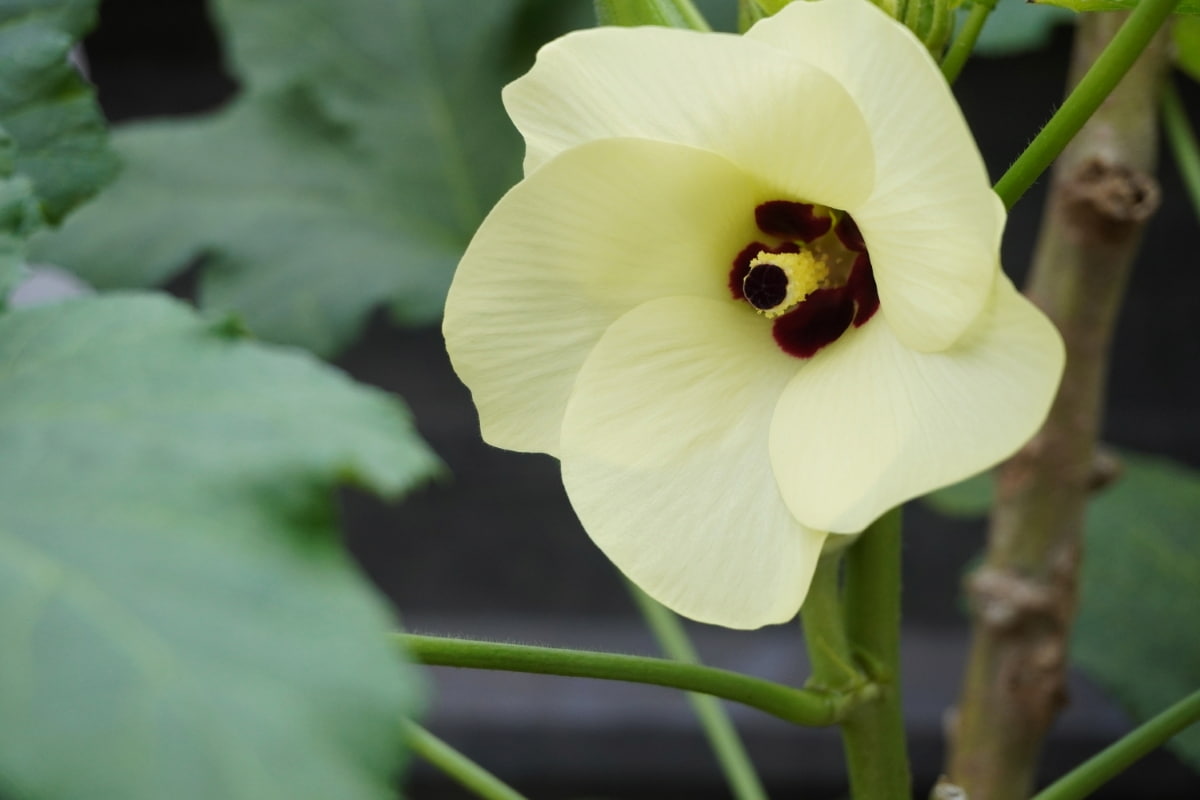Do okra plants flower? The answer is strongly Yes. Okra is a warm-season vegetable known for its beautiful flowers and delicious fruits. However, it can be frustrating when your okra plants produce flowers but no fruit. There are several reasons why this may be happening. Below, we have discussed the causes of okra plant flowering but not fruiting and some tips and remedies to correct them.

Okra Plant Flowers but No Fruit
Lack of Pollination: Understanding the Role of Pollinators in Okra Fruit Set
Are Okra Flowers Self-Pollinating? Yes, Okra can self-pollinate. However, self-pollination alone may result in lower fruit quality and yield. Cross-pollination, on the other hand, promotes genetic diversity and can lead to improved fruit set and overall plant health. When pollinators are not present, okra plants rely solely on self-pollination, resulting in limited genetic diversity and reduced fruit production.
To attract pollinators, creating pollinator-friendly habitats with diverse flowering plants, providing nesting sites for solitary bees, and minimizing the use of pesticides that may harm pollinators. As an alternative to natural pollination, hand pollination can be employed. But how do you pollinate okra flowers? The simplest of the hand pollination techniques is to shake the plant. This method is effective for plants like Okra which produce hermaphrodite flowers. They contain both male and female parts.
Weather Woes: How Climate Affects Okra Flowering and Fruit Development
If your okra buds turn yellow and fall off, they may be struggling with environmental stressors. The common stressors behind flower drop are extreme temperatures, improper watering, or inadequate humidity levels.
Heat Stress and Frost Damage
When exposed to excessively high or low temperatures, okra plants experience temperature stress, hindering flowering and fruit development. To mitigate this issue, shading the plants during the hottest part of the day can help reduce heat stress. In cooler temperatures, protective measures like row covers or cold frames can help create a microclimate that provides a slightly warmer environment for the plants.
Excess Rainfall and Inadequate Watering
excessive rainfall and inadequate watering can cause your okra plant flowers falling off before fruit. Adequate drainage systems and raised beds can help prevent waterlogging. Additionally, ensuring proper spacing between plants promotes air circulation and reduces the risk of disease development. Implementing a regular watering schedule and monitoring soil moisture levels can help maintain optimal hydration for the plants. Drip irrigation systems are particularly beneficial in delivering water directly to the plant’s root zone.
Excess Humidity Levels
Okra thrives in areas with low to moderate humidity levels. High humidity, especially above 70%, can impede pollination and increase the susceptibility to fungal diseases. Increasing air circulation around okra plants can help reduce humidity levels. This can be achieved by spacing plants adequately, pruning excess foliage, and removing weeds that can hinder airflow. Additionally, choosing open, sunny locations for planting can aid in lowering humidity levels.
Nutrient Deficiencies: Addressing Imbalances to Encourage Fruit Formation
A phosphorus deficiency can lead to weak plants and reduced fruit set. To rectify this deficiency, it is advisable to incorporate phosphorus-rich fertilizers, such as bone meal or rock phosphate, into the soil before planting. Furthermore, potassium deficiency can also hinder okra fruit formation. To address this deficiency, apply a potassium-rich fertilizer, such as potassium sulfate or potassium nitrate, based on the soil test results.
Poor Soil Conditions: Preparing the Ground for Successful Okra Fruit Growth
In addition to nutrient deficiencies, poor soil conditions can also affect fruit formation in okra plants. It is essential to prepare the ground adequately to provide an ideal environment for successful fruit growth. Before planting, prepare the soil to ensure the soil is well-drained with a pH level between 6.0 and 7.5, which is optimal for okra growth. If the soil is too compacted, consider tilling or loosening it to improve aeration and root penetration.
Overcrowding Issues: Thinning and Spacing for Improved Fruit Production
Overcrowding issues can also hinder fruit production in okra plants. When plants are overcrowded, they compete for resources such as nutrients, water, and sunlight, which can lead to reduced fruit production. To address this issue, thinning is necessary. Thin out the weaker plants, leaving enough space between them to promote proper air circulation and light penetration. This will enhance the overall health of the remaining plants and encourage a better fruit set.
In case you missed it: Okra Companion Plants: Best to Plant Next to Okra and What Should You Not Plant Next to Okra

Pests and Diseases: Identifying and Managing Threats to Okra Fruit Set
Why do okra plants have flowers but no pods? Pests and diseases are one of the reasons for this. Identifying and managing these threats is essential for successful fruit production. Common pests affecting okra plants include aphids, caterpillars, and whiteflies. Regularly inspect the plants and take appropriate measures, such as applying organic insecticides or using integrated pest management techniques, to control pest populations effectively.
Diseases like fusarium wilt and powdery mildew are common issues with okra plant fruit set. Proper sanitation practices, like removing infected plant debris and providing adequate airflow, can help prevent the spread of diseases. Additionally, applying fungicides at the appropriate times can help manage these diseases and protect the fruit set.
The Importance of Sunlight: Ensuring Sufficient Light for Fruitful Okra Plants
Providing adequate sunlight is crucial as it directly affects the okra plant’s ability to produce flowers and, ultimately, fruit. To ensure that your okra plants receive sufficient light, it is essential to consider the planting location. Okra plants should be planted in an area that receives full sun, which means a minimum of 6-8 hours of sunlight per day to encourage okra plants to produce fruit. Without enough sunlight, okra plants may become weak and leggy and fail to yield significantly.
In addition to the duration of sunlight, the quality of light is also important. Okra plants thrive in bright, indirect light. While they require direct sunlight, they also benefit from shade during the hottest part of the day, especially in regions with scorching temperatures. Providing a balance of direct and indirect light will help prevent the plants from becoming stressed or overheated.
Timing Matters: Best Practices for Planting Okra to Optimize Fruit Yield
When it comes to the timing of planting okra, consider the local climate and the plant’s growth requirements. Okra is a warm-season crop that thrives between 24°C and 32°C. It is best to plant Okra after the frost danger has passed. Okra seeds should be sown directly into the garden bed or container once the soil temperature reaches around 18°C or higher. Planting too early, when the soil is still cold, can lead to poor germination and slow growth.
Varietal Considerations: Selecting Okra Types Prone to Fruit Production
- Early Maturity: Early-maturing varieties produce fruits sooner, allowing for multiple harvests throughout the growing season. Look for varieties with a maturity period of around 50 to 60 days, as these are more likely to produce a bountiful crop.
- Disease Resistance: Look for varieties bred to resist diseases such as Fusarium wilt, root-knot nematodes, and powdery mildew. Disease-resistant varieties are more likely to thrive and produce a higher yield of healthy fruits.
- Fruit Length and Shape: The length and shape of the okra fruits can also vary between different varieties. Consider your preference and the Okra’s intended use when selecting a variety.
- Heat Tolerance: Look for varieties specifically bred for hot and humid conditions, as they are more likely to grow and produce a higher yield of fruits.
- Yield Potential: Look for varieties known for their abundant fruit set and high yield, which can ensure a more successful harvest.
In case you missed it: Natural and Organic Ways to Treat Okra Leaf Brown Spot: Effective Home Remedies

Conclusion
In conclusion, there are several reasons why your okra plants may be flowering but not producing fruit. By addressing these factors and implementing the tips and solutions mentioned above, you can increase the chances of your okra plants producing delicious fruits.
- Feed Your Flock for Less: Top 10 Tips to Save on Chicken Feed
- Ultimate Guide to Ossabaw Island Hog: Breeding, Raising, Diet, and Care
- Hatching Answers: The Top 10 Reasons Your Chickens Aren’t Laying Eggs
- Eggs and Economics: Breaking Down the Cost of Raising Backyard Chickens
- Defend Your Greens: Proven Methods to Keep Iguanas Out of Your Garden
- Ultimate Guide to Cinnamon Queen Chicken: A Comprehensive Guide for Beginners
- Ultimate Guide to California Tan Chicken: Breeding, Raising, Diet, Egg-Production and Care
- Ultimate Guide to Marsh Daisy Chicken: Breeding, Raising, Diet, and Care
- 10 Types of Chicken Farming Businesses You Can Start for Profits